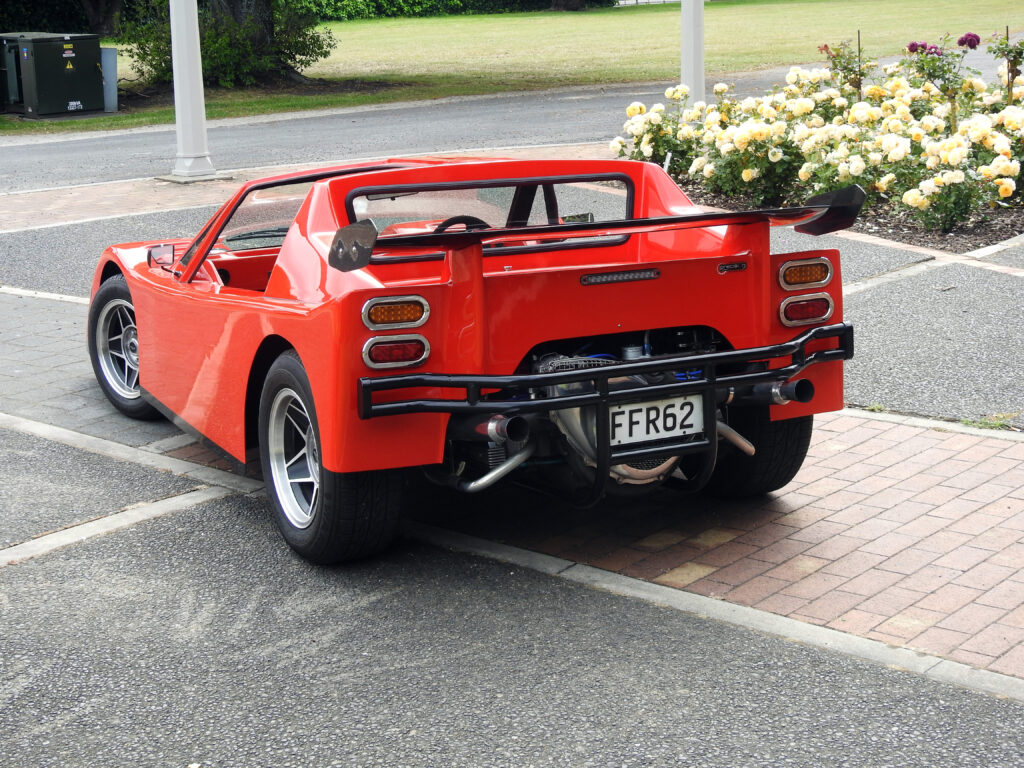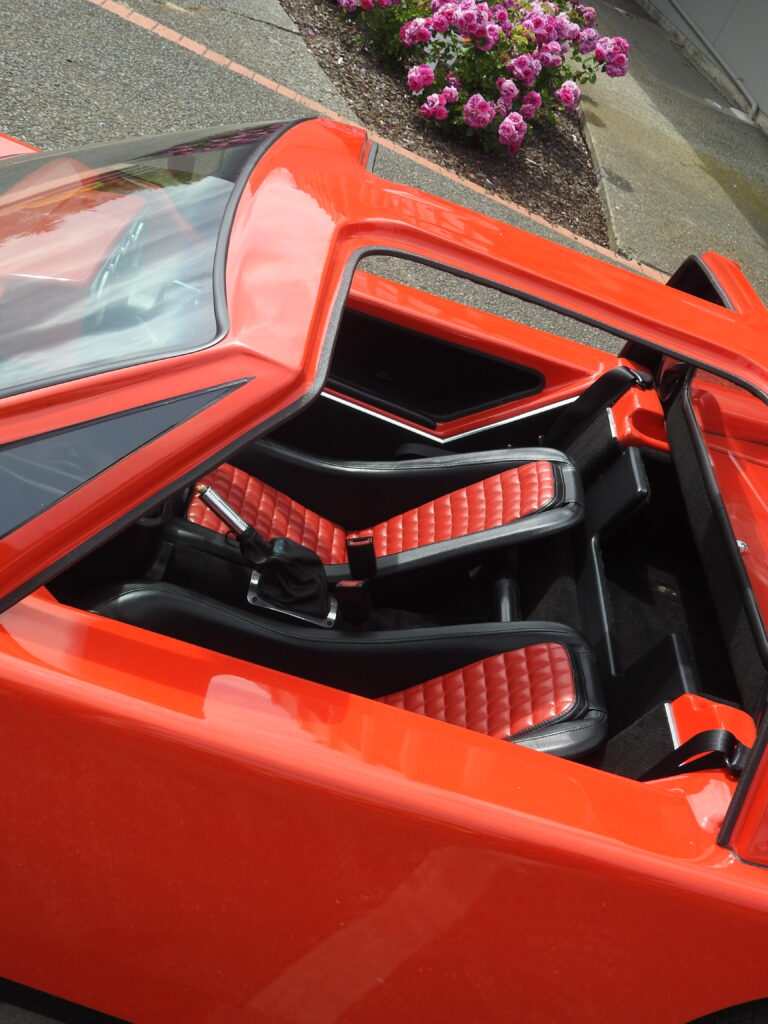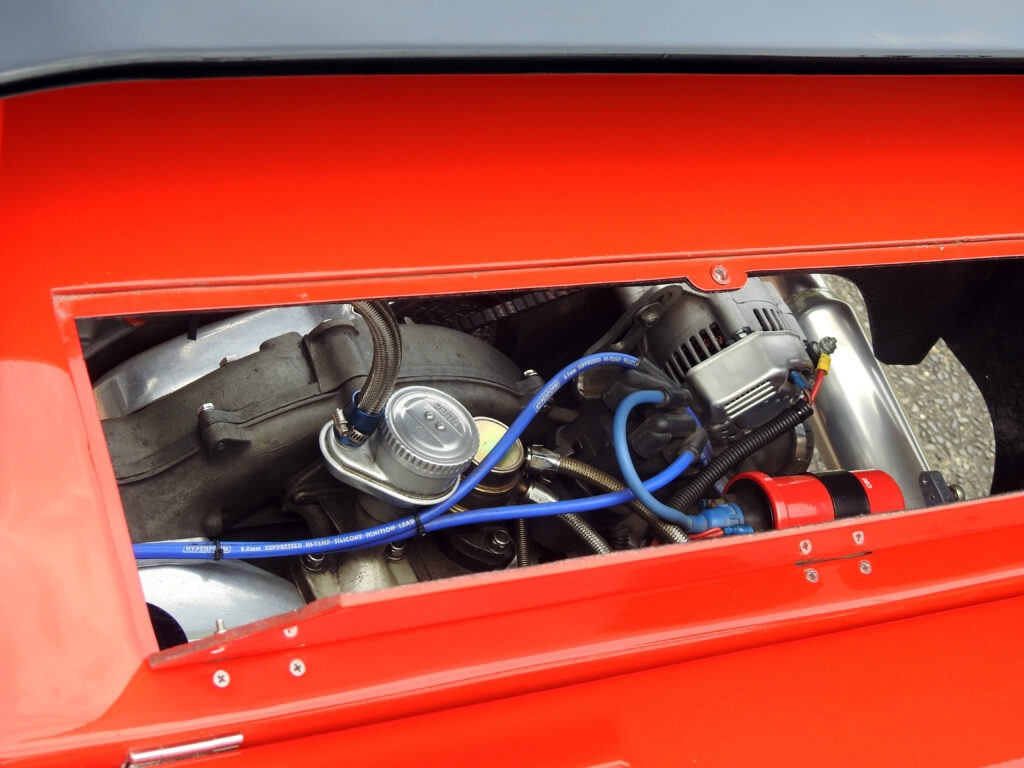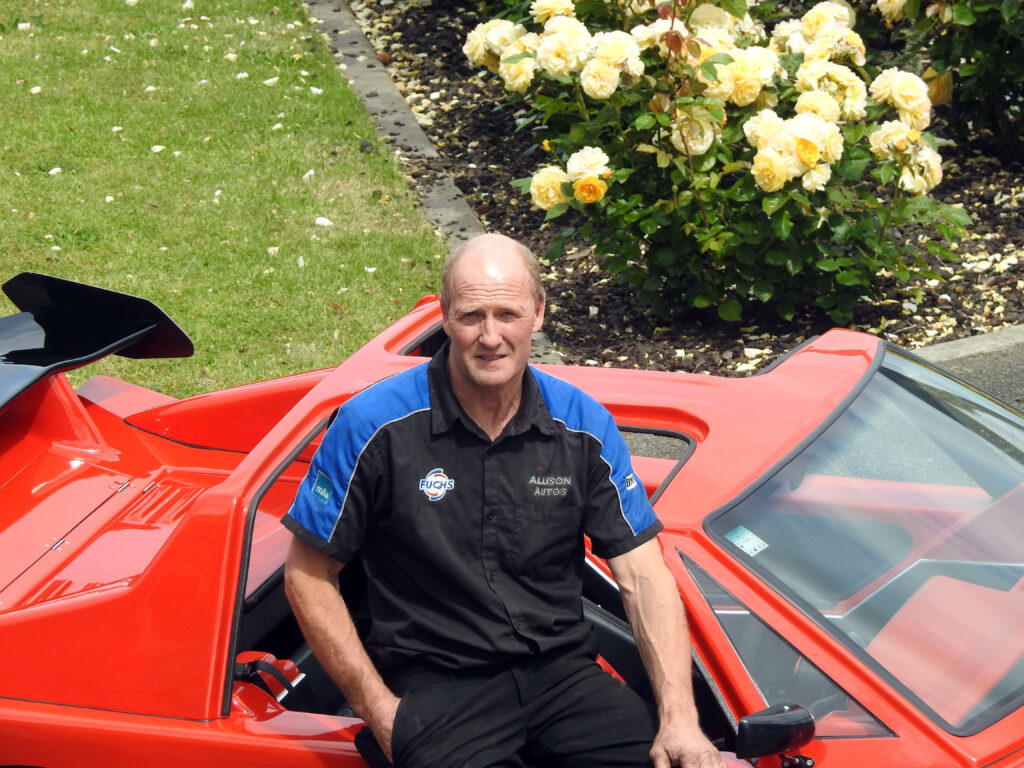Kits and Pieces
Selby Allison’s passing interesting in Volkswagens drew him into restoring one of the quirkier results of New Zealand’s protectionist economic era
By Patrick Harlow
Photography: Patrick Harlow and Selby Allison

“It’s merely a passing interest,” insists Selby — despite owning three variants of the classic VW Beetle, including an unusual VW van that was sold as a body kit for a Subaru. In his defence he points to a 1961 Ford Thunderbird, a car that he converted to right-hand drive. However, on the VW side of the ledger, since he opened Allison Autos in Whanganui 27 years ago, Selby has built 15 VW-powered Formula First cars, followed by a beach buggy, restored a derelict Karmann Ghia, and hot-rodded a common or garden Beetle into something that has to be seen to be believed. As speed is not something generally associated with classic VWs, though, Selby is still waiting for this particular modification to catch on amongst the hot rod faithful.
After selling his beach buggy, Selby missed the raw open-air experience that beach buggy owners get more than most, so to cure his addiction he purchased a BMW Z4. That didn’t satisfy Selby’s itch, however. It was too refined and too hard to tinker with, so he started looking for something else online — which is when he came across the Taipan for sale in Whangaparaoa. The fact that the Can-Am–styled fibreglass body happened to be sitting on a VW chassis was obviously just a coincidence.
After some short ponderings, Selby thought the Taipan was worth looking at so, just in case, he hitched a car trailer behind his ute and drove for seven hours to see it. In the flesh, the car was smaller than it appeared in the photographs, tired-looking, and apparently had a tendency to melt pistons. Still, after being assured that the current batch of pistons was intact, Selby took it for a quick test drive and the deal was done.

Thinking big
The Taipan kit originated from Christchurch company Cooke Bros Boat Builders Ltd during the ’70s. In New Zealand, those were the Muldoon years; the days of ‘Think Big’, wage freezes, weekend petrol bans, and runaway inflation. Almost certainly, if it had not been for Robert Muldoon’s protectionist regime, the Taipan may never have entered production.
At the start of the ’70s, Ian and Gavin Cooke were busy building boats — at least eight a week emerged from their factory. The boats ranged from 12-foot runabouts through to 18-foot cabin cruisers to their biggest: a 22-footer. The mid-’60s through to the late ’70s was a great time to build boats and New Zealand could not get enough of them.
This balloon popped when Robert Muldoon introduced a ‘luxury’ sales tax in 1979 — 20 per cent for items such as boats, caravans, and pottery and 40 per cent for music records. It drove many companies out of business. Had it not been for the Taipan, Cooke Bros would have been one of them.
Fortunately, two years earlier, a friend of Gavin Cooke’s had had a beach buggy that had definitely seen better days. Gavin thought that, with their skills in fibreglass, they could make something of it. Using the VW chassis of the buggy they built the first Taipan in six weeks, including making the plug and moulds. The car was principally Gavin’s design but its shape was inspired by the McLaren Can-Am racing cars. The rear-mounted VW engine was exposed, in keeping with the racing car theme.
Building it was a spur of the moment decision, principally aimed at demonstrating that Cooke Brothers could build anything in fibreglass. The car was the centrepiece on the company’s stand at a boat show late in 1977. Gavin used it as his own transport for two years before it was sold. This first car, which was painted black, still exists in Blenheim.

The Taipan strikes
Another car was made for a customer the following year so that the buyer could use it in the Christmas holidays for some open-topped motoring. That is where it might have ended if the infamous sales tax had not been introduced. Although the 20 per cent tax also applied to cars, interest in the Taipan was such that Gavin believed that they could sell more cars than boats. The car was turned into a kit and production started.
A company sales brochure for the Taipan featured a pretty model in overalls gently cleaning the car in a rustic setting. The description of the car was similarly entertaining …
“A low blur sweeping out of the corner and hurtling along the straight, with its snarl changing to a rasping bellow on overrun as the brakes go on for the corner. The taps are turned up again and the car squats on its haunches as it rockets through the turn and is gone — the fading beat of the motor is all that is left of its passing.”
A bit of a stretch when the car in question the car was based on the humble air-cooled Beetle. Even in those days, it was a brave man who used the word ‘rocket’ to describe Beetle firepower. Still, in an import-starved market, this unlikely combination of Can-Am and rattly tin can inspired plenty of buyers. The $2300 kit consisted of a finished body with fitted windscreen, boot lid, seats, pinstriping, and headlight covers all fitted. The car came in two guises: an open tourer with a moulded plastic wrap-around wind fairing and hard T-top with gull-wing doors, fitted with a Toyota windscreen.
By the time production finished in late 1980 or early 1981, 30 kits had been sold. Of these, six were hardtops and two were turnkey. One tourer is on display in Southward Car Museum and is a good example of the cars that were built by Cooke Brothers.

Taipan’s second chance
When Cooke Brothers went into receivership in 1983 the moulds went to Peter Clapham in Porirua. Peter bought the moulds for $3000 and decided to buy the demonstrator – a hardtop with no doors – for another $4000.
Peter was no stranger to car building. Previously he had built about 80 Daytona beach buggies. The Taipan was looked upon as a profitable hobby for when the factory was quiet. Spa pools were the rage at the time and he was turning those out by the dozen. Still, over the next four years he made another 17 kits, curiously six of them hardtops. Peter confirmed Selby’s car was one of the hardtops that came out of his Porirua factory.
In 2012 Selby, knowing just a little of the car’s history, decided on a ground-up restoration of the car. As it was a kit car anyway, he figured that nobody would complain if he improved certain bits along the way. This involved getting rid of the ugly snorkels on the back and replacing them with a period-correct wing. The wing was purchased online for less than $100. The electrical system was upgraded from 6 to 12 volts and electronic ignition was added for more reliable starting. Rear tail lights and front indicators were upgraded to more efficient LEDs. Fibre-Form in Palmerston North was given the job of modifying the fibreglass body by filling in the front wheel arches and extending the rear fender.
While all this was happening, Selby used his mechanical skills to strip down and recondition all the oily bits. He also upgraded the front drum brakes to disc. The shortened VW floor pan was in remarkably good condition and required only a bit of sanding and a repaint.
In the end, it was only the transparent bits that gave Selby any headaches. The headlight covers were long gone so he had to make new ones out of perspex. The windscreen was even trickier as Selby had no idea of where it had come from. Fortunately, Gary of Central Glass in Whanganui knew his business. After taking some measurements off the old and badly chipped windscreen he wandered around his shop hunting for a windscreen of a similar curvature. The windscreen for a Honda Accord was deemed to be the closest and could be cut down to fit. Gary knew his stuff and got it right the first time. A Toyota Estima donated the steering column cover and some attractive modern indicator and light stalks.
Once the freshly painted Taipan body was bolted back on the chassis, Selby took the opportunity to upgrade the old VW speedo to a full set of aftermarket electronic gauges from www.beachbuggies.co.nz.
Even Selby’s ‘passing interests’ seem to warrant great focus so the total restoration took just over six months. It was virtually a brand-new Taipan that drove up to the VW Nationals in Taupo and won the award for the best kit car of the show.



